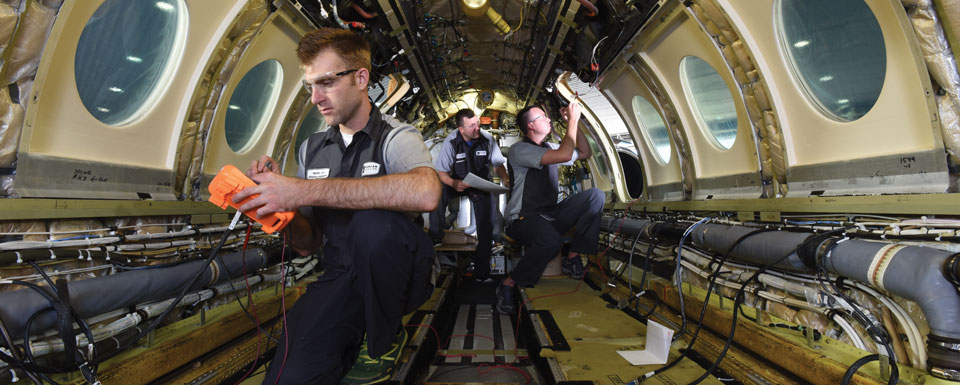
“Right now, an aircraft that has an ADS-B solution installed is valued higher with nearly a dollar-for-dollar add-on for its ADS-B modification. However, the closer we get to the end of 2019, as more and more of the fleet are upgraded, aircraft without the upgrade will see a significant sales price reduction.”
-Doug Roth, Aircraft Sales and Acquisitions
In many ways right now, budget is king. Aircraft owners often choose to forgo future modifications. This can have significant consequences, especially when an aircraft is placed on the market. For this reason, keeping an aircraft up-to-date with respect to modifications is one of the easiest ways to protect the value of the asset through a purchase process.
“When modifications become common in a fleet, the decision to not adopt that modification more often than not becomes a ‘pay me now or pay me later’ situation,” says Adrian Chene, Duncan Aviation Avionics Tech Rep. “If you are going to pay for it either way, it starts to make more sense to adopt the modification and enjoy the features and benefits it provides.”
Doug Roth, an Aircraft Sales and Acquisitions expert with Duncan Aviation, knows this well.
“Once the majority of a fleet has a particular upgrade, trying to sell an aircraft without that modification results in a deduction from the aircraft’s value,” he says. “If an upgrade is desirable and implemented sporadically in a fleet, then it adds value to the aircraft, depending of course on the nature of the modification and the preferences of the purchaser.
“ADS-B is a great example,” Doug continues. “Right now, an aircraft that has an ADS-B solution installed is valued higher with nearly a dollar-for-dollar add-on for its ADS-B modification. However, the closer we get to the end of 2019, as more and more of the fleet are upgraded, aircraft without the upgrade will see a significant sales price reduction.”
Not all modifications fall in this category, though, says Doug. That’s why it makes sense for aircraft operators to have an excellent relationship with their aircraft sales representative and their MRO (Maintenance, Repair and Overhaul) provider.
Open discussions between operators and their MRO facility regarding goals for the flight department and each aircraft in that department, changing aircraft missions, business uses and passenger preferences, will all help operators protect the value of their aircraft, Adrian says. Those discussions need to include modifications being adopted by certain airframe segments.
“These discussions are vitally important before an inspection comes due,” Adrian says. “Many modifications are less labor intensive if they are combined with an inspection. That results in cost savings for the operator who upgrades at that time rather than waiting until later, when the aircraft is going on the market.”
Another consideration that requires collaboration between the MRO and the operator, is the possibility of preparing and provisioning the aircraft for a future upgrade during an inspection while not completing the upgrade.
“This includes preparing the aircraft and wiring it for a future, desirable modification,” explains Adrian. “That makes the actual upgrade much easier and less time-consuming to complete when it is time to do so.”
Even when an aircraft fits its mission for its operator perfectly, it’s a good idea to consult with an MRO and an aircraft sales representative periodically. That way you have all the information and a better understanding of what is right for you, your aircraft, and its future value. After all, Adrian says, if you are going to pay for someone else to enjoy a state-of-the-art aircraft at its sale, you might as well adopt common modifications now and enjoy the convenience and safety that those modifications bring for you and your passengers.